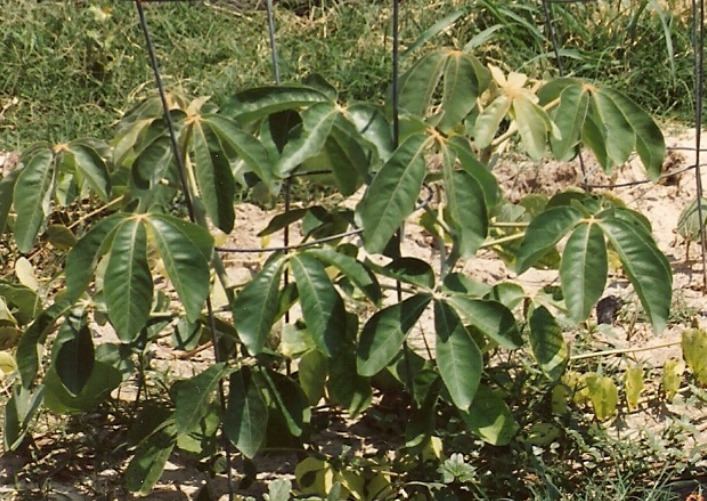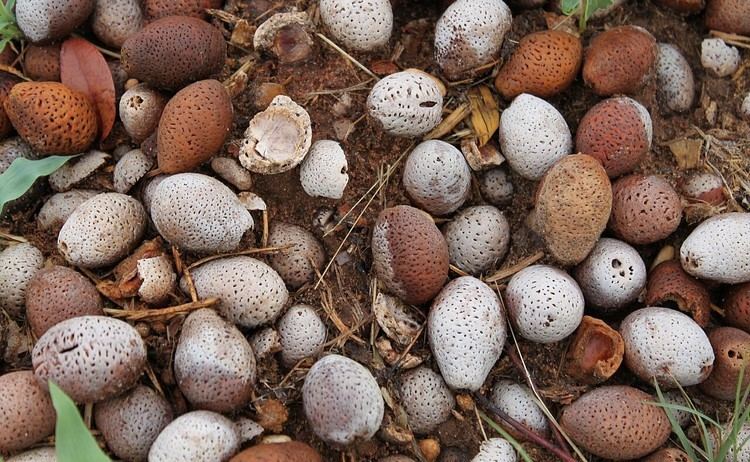Higher classification Schinziophyton | Scientific name Schinziophyton rautanenii Rank Species | |
Genus SchinziophytonHutch. ex Radcl.-Sm. Similar Marula, Marula oil, Gevuina, Palm kernel oil, Seed oil | ||
Mongongo nut oil benefits
The mongongo tree, mongongo nut or manketti tree (Schinziophyton rautanenii) is a member of the family Euphorbiaceae and of the monotypic genus Schinziophyton. A large, spreading tree, the mongongo reaches 15–20 metres tall. It is found on wooded hills and among sand dunes, and is associated with the Kalahari sand soil-types. The leaves are a distinctive hand-shape, and the pale yellow wood is similar in characteristics to balsa, being both lightweight and strong. The yellowish flowers occur in slender, loose sprays.
Contents
- Mongongo nut oil benefits
- Natural hair hot oil treatment with exotic jamaican black castor oil with mongongo oil naturalhair
- Fruit
- Distribution
- Traditional uses
- Nutrition
- Economic aspects
- References

Natural hair hot oil treatment with exotic jamaican black castor oil with mongongo oil naturalhair
Fruit

The fruit are known as mongongo fruit, mongongo nuts, manketti nuts or nongongo. The egg-shaped, velvety fruit ripen and fall between March and May each year, and contain a thin layer of edible flesh around a thick, hard, pitted shell. Inside this shell is a highly nutritious nut.
Distribution

The mongongo is distributed widely through subtropical southern Africa. There are several distinct belts of distribution, the largest of which reaches from northern Namibia into northern Botswana, south-western Zambia and western Zimbabwe. Another belt is found in eastern Malawi, and yet another in eastern Mozambique.
Traditional uses

Mongongo nuts are a staple diet in some areas, most notably among the San bushmen of northern Botswana and Namibia. Archaeological evidence has shown that they have been consumed by the San communities for over 7,000 years. Their popularity stems in part from their flavour, and in part from the fact that they store well, and remain edible for much of the year.

Dry fruits are first steamed to soften the skins. After peeling, the fruits are then cooked in water until the maroon-coloured flesh separates from the hard inner nuts. The pulp is eaten, and the nuts are saved to be roasted later. Alternatively, nuts are collected from elephant dung; the hard nut survives intact through the digestive process and the elephant does the hard work of collecting the nuts. During roasting of the nuts, direct contact with the fire is avoided, using sand to distribute the heat evenly. Once dry, the outer shell cracks easily, revealing the nut, encased within a soft, inner shell. The nuts are either eaten intact, or pounded as ingredients in other dishes.
The oil from the nuts has also been traditionally used as a body rub in the dry winter months, to clean and moisten the skin, while the hard, outer nut-shells are popular as divining "bones". The wood, being both strong and light, makes excellent fishing floats, toys, insulating material and drawing boards. More recently, it has been used to make dart-boards and packing cases.
Nutrition
Per 100 grams shelled nuts:
Economic aspects
Richard Borshay Lee, writes
A diet based on mongongo nuts is in fact more reliable than one based on cultivated foods, and it is not surprising, therefore, that when a Bushman was asked why he hadn't taken to agriculture he replied: "Why should we plant, when there are so many mongongo nuts in the world?"
